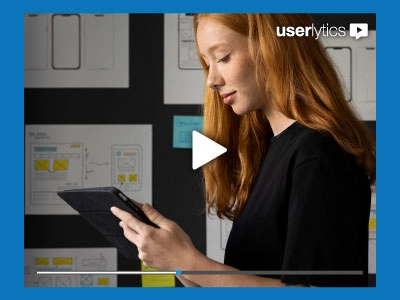
Behind every breathtaking logo, stunning website, or captivating brochure lies a meticulously crafted design proposal. Whether you’re a freelance graphic designer or you work for an agency or company, the design proposal is a critical element in landing new clients.
In this blog post, we cover the definitions and the importance of design proposals, and we delve into their main components as well as some essential tips that will help you create a killer document that will lure and delight your prospects.
What Is a Design Proposal?
Design proposals are formal documents or presentations that outline a potential design project or collaboration with prospective clients.
The document serves as a roadmap for the design process and provides a clear understanding of the project’s scope, objectives, costs, timelines, and other relevant details.
The primary purpose of the design proposal is to communicate the designer’s vision, strategy, and the value they can bring to the client’s project.
A well-crafted design proposal should be informative and persuasive, and show the designer’s ability to address the client’s needs effectively. It helps designers and clients align their expectations and establish a solid foundation for a successful collaboration.
Why a Design Proposal?
The design proposal is also the proposed solution for a potential client pain point and the most effective way to pitch your design services.
Designers should create a design proposal for several important reasons:
Clarity and understanding
A design proposal helps establish a clear and shared understanding between the designer and the client regarding the project’s objectives, scope, and expectations. It minimizes the risk of miscommunication or misunderstandings.
Legal and contractual clarity
Design proposals often include important legal and contractual terms, protecting both parties’ interests. They clarify payment terms, project timelines, intellectual property rights, and dispute resolution procedures.
Cost estimation
Design proposals include cost estimates, allowing clients to understand the financial aspect of the project. This transparency helps clients make informed decisions and budget accordingly.
Creative vision
Design proposals enable designers to showcase their creative vision and approach. This is an opportunity to sell the client on the value of the designer’s expertise and unique design concepts.
Project management
Design proposals often include project timelines and milestones, aiding in project management and ensuring that the work progresses smoothly.
Record of agreement
Once accepted and signed, a design proposal becomes a legal record of the agreement between the designer and the client. It serves as a reference point if any disputes or issues arise during the project.
In essence, a design proposal serves as a crucial tool for designers to formalize their project agreements, protect their interests, and create a strong foundation for a successful collaboration. This streamlines their work process and provides clients with a sense of security and confidence in the project.
In essence, a design proposal serves as a crucial tool for designers to formalize their project agreements, protect their interests, and create a strong foundation for a successful client-designer collaboration. It not only benefits designers by streamlining their work process but also provides clients with a sense of security and confidence in the design project.
Essential Elements of a Design Proposal
Whether you choose to modify a design proposal template or fully create one from scratch, there is a series of elements that you must include to pack a punch.

Cover page
The cover page is the first thing the client sees when they receive the proposal. It’s an opportunity to make a positive and memorable first impression. A well-designed cover page can grab the client’s attention and pique their interest.
Design proposal cover letter
A cover letter allows you to personalize your proposal by addressing the client by name and explaining why you are interested in working with them specifically. It demonstrates that you’ve taken the time to understand their needs and goals.
Table of contents
A table of contents provides an organized and easy-to-follow structure for the proposal. It allows the client to quickly navigate to specific sections or topics of interest, making it more user-friendly and efficient to review the document. It also adds clarity, professionalism, and transparency.
Project overview or project scope
This section allows designers to offer an executive summary of the project. The overview outlines the project’s scope, specifying what will and won’t be included in the design project. This helps prevent misunderstandings and scope creep as the project progresses.
Objective
The objective of the project sets a clear direction for the design work. It ensures that both the client and the designer have a shared understanding of the project’s purpose and what needs to be achieved.
Timeline
Any design or business proposal requires a timeline. It provides a clear roadmap for the project, outlining when specific milestones, tasks, and deliverables will be completed. It also sets clear expectations for the client regarding the project’s duration.
Deliverables
A list of deliverables provides a clear and detailed outline of what the client can expect to receive as the outcome of the project. It eliminates ambiguity and ensures both parties have a shared understanding of the project’s scope.
Pricing
An essential element of proposal writing, pricing allows potential clients to have a clear understanding of the financial investment required for the design project. It helps manage their expectations and ensures they are prepared for the costs involved.
“Why Me?”
This section allows you to explain why you, as the designer or design agency, are the best fit for the client’s project.
It offers an opportunity to personalize your proposal by highlighting your unique qualifications and expertise. You can include recommendations from previous clients to boost this section.
Contact Information
It is essential to add your contact details so you can be reached when you get the job!
Tips for Creating a Creative Design Proposal
You have now added the basic elements of a winning proposal to seduce your prospective client -you can use a more creative proposal template every time, depending on the company. However, the proposal creation process requires flair. The following tips will help you.
1. Understand Your Client’s Brand
An in-depth understanding of the client’s brand ensures that your design proposal aligns with their existing brand identity, values, and messaging. This alignment is essential to maintain consistency and coherence in their branding.
Clients have specific brand objectives and goals. Understanding their brand allows you to tailor your design proposal to meet these objectives effectively. Your proposal can demonstrate how your design solutions will contribute to the client’s brand vision.
2. Write a Killer Problem Statement
A well-written problem statement provides clarity about the primary issue or challenge the client is facing. It ensures that both the designer and the client have a common understanding of the problem that needs to be addressed through design.
When the client sees their problem clearly articulated in the proposal, it can lead to greater buy-in and commitment to the project. They are more likely to understand the necessity of design work and be enthusiastic about finding a solution.
3. Comprehensively Outline Your Solution
Once you state the problem clearly, it’s in your best interest to tie in your solution and explain why it solves the customer pain points. A well-articulated solution provides the client with a clear, detailed plan for how the design work will address their specific problem. It ensures they understand the proposed approach and what they can expect from the project.
4. Customize Your Proposal
Tailor your proposal to the specific needs and preferences of the client. Show that you’ve paid attention to their unique situation. Customizing your proposal ensures that the content is directly relevant to the client’s industry, niche, or project. This makes it more engaging and convincing for the client.
Personalization creates a connection between you and the client. It makes the client feel valued and understood, which can foster trust and positive rapport.
5. Include a Strong Portfolio
Showcase your relevant work by including a portfolio section in your proposal. Highlight projects that are similar to the one you’re proposing for the client.
6. Consider Using a Proposal Writing Tool
Using a design proposal writing tool can offer several advantages to designers and design agencies. These tools are designed to streamline the proposal creation process and enhance the quality and professionalism of your proposals. Here are some reasons why using a design proposal writing tool is beneficial:
- You can save time in the whole writing process.
- They help you present a structured and consistent document.
- A tool can help you reduce possible errors such as typos and grammar issues.
- You can store all your proposals in an organized manner.
- Some tools offer client management features that you can leverage to organize your work and projects.
7. Stay Open to Revision
Openness to revision fosters collaboration with the client. It invites their feedback and input, making them feel like an active participant in the project. This collaborative approach can lead to more client satisfaction.
By being open to revisions, you demonstrate a client-centric mindset. It shows that you prioritize the client’s needs and are willing to make adjustments to meet their preferences and expectations.
Conclusion
In conclusion, a well-structured, client-centric proposal is not just a formality; it’s a powerful tool that can make the difference between securing a project and missing out on valuable opportunities. A good design proposal sets the stage for successful collaboration, clear communication, and project excellence.
Design proposals are the blueprint for solving problems, achieving objectives, and satisfying clients. They showcase your professionalism, problem-solving abilities, and commitment to delivering exceptional results.
Want to Start UX Testing for Free?
Data Visualizations
Userlytics

Since 2009 we have been helping enterprises, governmental organizations, non-profits, agencies and startups optimize their user experience, or UX. With our state-of-the-art platform, massive global participant panel and unlimited accounts/seats for democratizing user research, we are the best all-in-one solution for remote user testing.
Schedule a Free DemoEl Taghdouini, M. December 12, 2023. How to Create a Killer Design Proposal – 7 Critical Tips. Userlytics.




